Passengers 251 Fatalities 0 Date 19 February 1985 | Crew 23 Injuries (non-fatal) 24 (2 serious) Number of deaths 0 Passenger count 251 | |
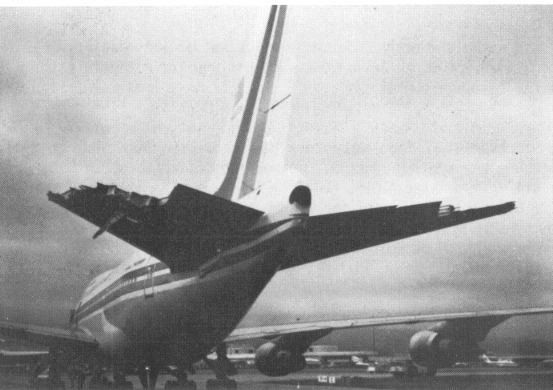 | ||
Summary High altitude stall, upset and 30,000 ft. dive pilot error after Engine 4 flameout Similar Singapore Airlines Flight 006, China Airlines Flight 611, Air France Flight 358, Northwest Airlines Flight 85, Chalk's Ocean Airways F | ||
China Airlines Flight 006 (callsign "Dynasty 006") was a daily non-stop flight from Taipei to Los Angeles International Airport. On February 19, 1985, the Boeing 747SP used to conduct the flight was involved in an aircraft upset accident, following the flame-out of the No. 4 engine, while cruising at FL 410 (41,000 ft.)(12,500 m). The plane rolled over and plunged 30,000 ft (9,100 m), experiencing high speeds and g-forces (approaching 5g) before the captain was able to recover from the dive, and then to divert to San Francisco International Airport.
Contents
- Air crash investigations mayday 04x06 panic over the pacific china airlines flight 006
- Accident
- Aftermath
- In popular culture
- References
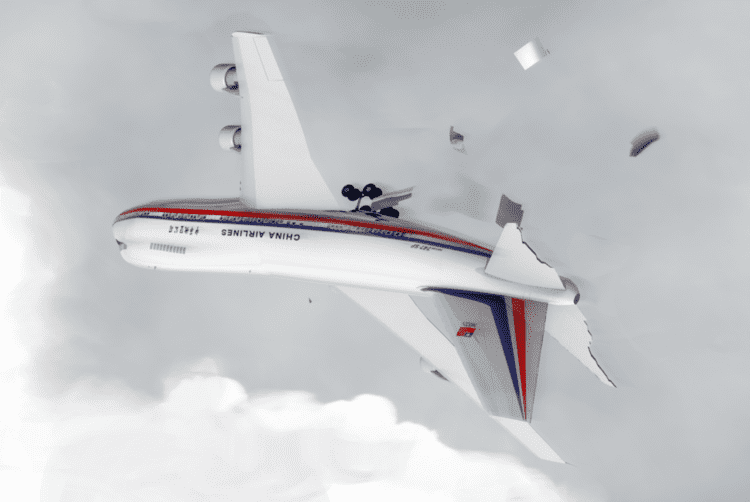
Air crash investigations mayday 04x06 panic over the pacific china airlines flight 006
Accident
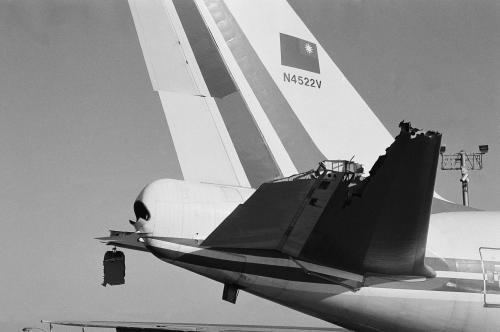
The accident occurred ten hours into the service that departed Taipei at 16:15. The Boeing 747SP-09 was 350 miles (550 km) northwest of San Francisco, cruising at an altitude of 41,000 ft (12,500 m). The cockpit crew, consisted of Captain Min-Yuan Ho (55), First Officer Ju Yu Chang (53), Flight Engineer Kuo-Win Pei (55), Relief Captain Chien-Yuan Liao (53), and Relief Flight Engineer Po-Chae Su Shih Lung (41). Captain Ho had approximately 15,500 flight hours. The first officer had more than 7,700 hours, and the flight engineer had approximately 15,500 hours of flight time. The accident occurred while the main crew was on duty.
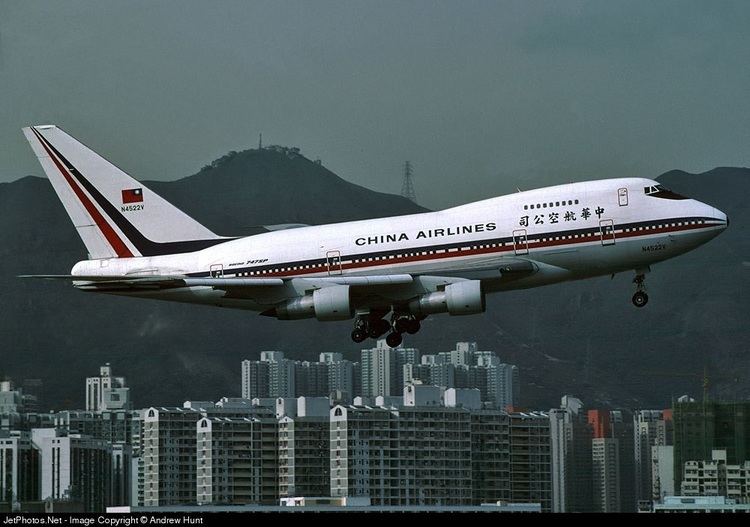
The sequence began when the No. 4 engine stalled at a low thrust setting and flamed out. That engine had failed twice during previous flights (while cruising at FL 410 and 430). In each of those cases, the engine was restarted after descending to a lower altitude. The maintenance response to the logbook entries that noted the problems included engine inspection, fuel filter drainage and replacement, vane controller inspection and replacement, water drainage from Mach probes, insufficient modules, and other filter replacements. None of those acts fixed the recurrent stalling and flameout problem of the No. 4 engine.

After the flameout, the captain instructed the flight engineer to attempt to restart the engine, while the plane remained at FL 410 (41,000 feet) with the autopilot still engaged and the bleed air on. This was contrary to the flight manual procedure, which required the plane to be below 30,000 feet (9,100 m) before any attempt to restart a flamed-out engine. The attempt failed.
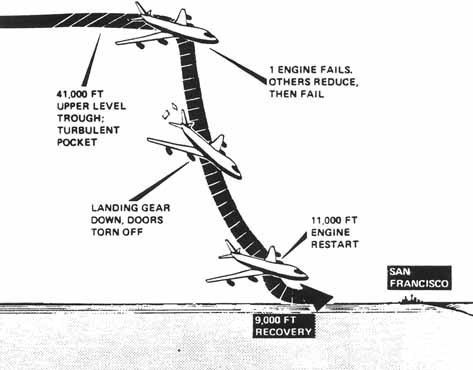
The airspeed continued to decrease, while the autopilot rolled the control wheel to the maximum left limit of 23 degrees. As the speed decreased even further, the plane began to roll to the right, even though the autopilot was maintaining the maximum left roll limit. By the time the captain disconnected the autopilot, the plane had rolled over 60 degrees to the right and the nose had begun to drop. Ailerons and flight spoilers were the only means available to the autopilot to keep the wings level as the autopilot does not connect to the rudder during normal flight. To counteract the asymmetrical forces created by the loss of thrust from the No. 4 engine, it was essential for the pilot to manually push on the left rudder. However, the captain failed to use any rudder inputs at all, before or after disconnecting the autopilot. The resulting uncontrolled flight path is depicted in the diagram.
As the plane descended through clouds, the captain's attention was drawn to the artificial horizon which displayed excessive bank and pitch. Because such an attitude is highly irregular, the captain incorrectly assumed the indicators to be faulty. Without any visual references (due to the clouds) and having rejected the information from the ADIs, the crew became spatially disoriented.
Only after breaking through the bottom of the clouds at 11,000 feet (3,400 m) was the captain able to orient himself and bring the plane under control, leveling out at 9,600 feet (2,900 m). They had descended 30,000 ft (9,100 m) in under two and a half minutes. while all onboard experienced g-forces, as high as 5g. The cockpit crew believed that all four engines had flamed out, but the National Transportation Safety Board found that only engine No. 4 had failed.
After leveling out, the three remaining engines were supplying normal thrust. A restart attempt brought No. 4 back into use. They began climbing and reported to air traffic control "condition normal now" and continuing on to Los Angeles. They then noticed that the inboard main landing gear was down and one of the plane's hydraulic systems was empty. Because they did not have sufficient fuel to reach Los Angeles with the drag added by the landing gear, they diverted to San Francisco. An emergency was then declared and they flew straight in to the SFO airport.
On final approach, the elevators didn't respond to the captain's control inputs, forcing him to control the plane's pitch angle with differential engine power. The plane landed without further incident.
Aftermath
There were two serious injuries on board: a fracture and laceration of a foot, and an acute back strain requiring two days of hospitalization. The aircraft was significantly damaged by the excessive G-forces. The wings were permanently bent upwards by 2 inches (5 cm), the inboard main landing gear lost two actuator doors, and the two inboard main gear struts were left dangling. Most affected was the tail, where large outer parts of the horizontal stabilizer had been ripped off. The entire left outboard elevator had been lost along with its actuator, which had been powered by the hydraulic system that ruptured and drained.
After repairs were made to the plane, it returned to service on April 25, 1985. It continued in service for nearly 12 years until it was leased to China Airlines' sister company, Mandarin Airlines, on January 1, 1997, and was in daily service for the remainder of that year. Mandarin then sent it to McCarran International Airport for storage. From April 2002 it was owned and operated by a religious organization known as Gospel to the Unreached Millions (GUM), headed by K. A. Paul, and was christened 'Global Peace One'. On July 17, 2005 the FAA suspended its operating certificate due to insufficient maintenance. As of May 20, 2010, the aircraft is kept in a large hangar at General Abelardo L. Rodríguez International Airport in Tijuana, Baja California, and is reported to be in very poor condition. The aircraft can be seen using Google Maps at the coordinates 32°32'38.0"N 116°57'56.1"W.
China Airlines still operates one of its scheduled Taipei-Los Angeles services as Dynasty 006, utilizing the Boeing 747-400 until late 2014 and then the Boeing 777-300ER.
